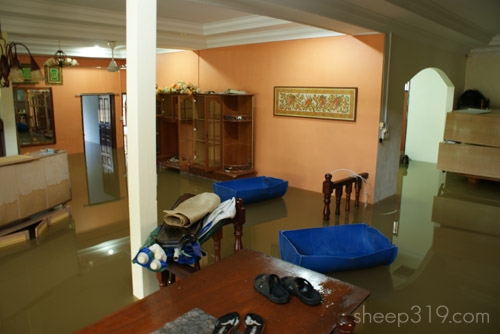Hurricane season starts June 1. We’ve had a nice few years without issue, but it’s good to have in mind how to prepare since we typically only get a few days warning before a major storm would make landfall.
Here in Lee County in Southwest Florida, we’re at particular risk from both wind and floods, as the linked FEMA flood map shows. Just because nothing’s happened recently, there’s no reason to get complacent.
Obviously the first thing to worry about is your home, family, and pets. Make sure you have suitable hurricane supplies in store, and a way to prepare food if the power goes out. Installing good quality shutters or impact-resistant windows provides solid protection against your home or office being breached by wind or water.
But once you’ve taken care of those items, it’s time to think about your computer systems and how to protect valuable equipment and data. Make sure you have a plan for both home and work, and ensure family members and employees all know what to do.
Minor power incidents
It’s more than likely that the power will be affected at some point over the coming months. When a storm hits, power stations can go offline or lines can be brought down.
- Invest in a battery backup system so that if the power goes out, you have time to shut your computers down cleanly without losing your work.
- Spend the extra money to get a backup system that also provides surge protection. If the voltage spikes without warning, this can cause serious damage to electronic equipment, even if it’s not switched on. This can affect your computers, consoles, televisions, routers, and any other device that contains a chip.
You’ll typically have some outlets with battery backup and surge protection, and some with only surge protection. You don’t have worry about connecting peripherals like speakers or printers or laptops with their own batteries to the backup power, but do ensure that monitors, desktops, and game consoles are connected. You won’t need to connect your router either – if the power’s out, the Net will be out too.
Offsite backup
Having an offsite backup is good practice anyway, but it becomes particularly important when a storm is coming. You have two main options:
- Online backup: store all your important data in the cloud using a service like Google Drive, Dropbox or Carbonite.
- Disk backup: copy all your important files to an external disk on a regular basis, and keep it in a safe place somewhere else. Keep a spare in the office so that if you have to evacuate in a hurry, you can copy any last-minute files and take them with you.
The best solution, of course, is to do both. Better still, have two cloud backups and keep them in sync. It’s highly unlikely that a major cloud service would lose all its data, but you never know. For home use, duplicating your data on a couple of free sites will be plenty good enough, and since it won’t cost you anything, why not?
Preparing for a major incident
If you get a storm warning, here’s a simple four-step checklist.
- Unplug everything, including phone lines. Switching them off isn’t enough: you need to make sure they’re not connected to the power or phone system.
- Move items to a safe place. Get everything off the floor. If possible, move valuable items to an upper floor. If you only have one floor, then put them on a table or desk. Just being two feet off the ground could save your computer from a flood. A shelf in a cupboard will provide extra protection.
- Wrap everything up. Use heavy grade plastic or a tarp and some duct tape, and cover your computers completely. (Allow them to cool first – don’t wrap them up while they’re hot!) This will protect them from rain and light debris in the event that you lose a window.
- Charge everything. Phones, tablets, and laptops could all be useful in the aftermath of a storm, so make sure they’re good to go. If you have rechargeable batteries or flashlights, charge those too.
When water gets in
If your phone, computer or laptop does get wet, then don’t panic!
Whatever you do, don’t switch it on. Wipe the outside clean, then allow it to dry naturally and wait until all the moisture is gone. The trick of putting it in a bag with a lot of rice for a day or two can often be very effective – the rice absorbs all the water, even from inside your device.
If you have any doubts at all, bring it to us and we’ll check it out for you.
Stay safe!






